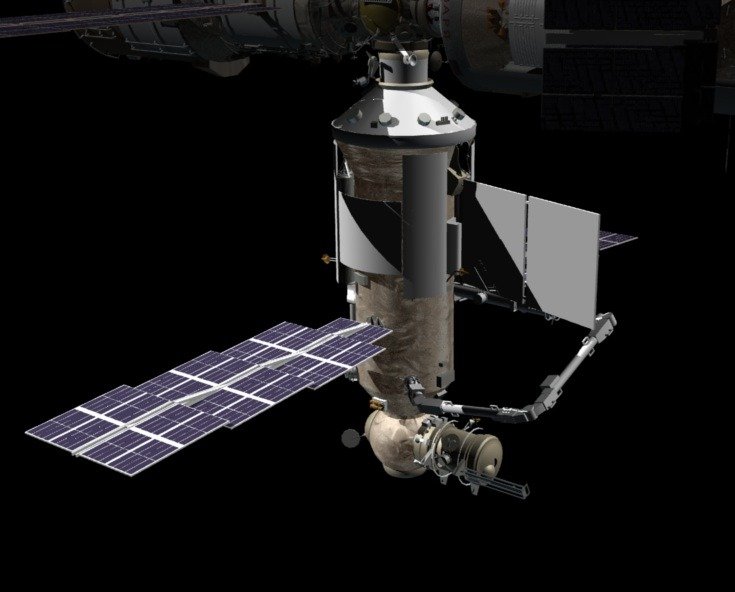On July 21st at 5:58 Moscow Time the Russian Proton-M rocket was launched from Baikonur.
The rocket carried the new Russian multipurpose laboratory module (MLM) Nauka (Russian: Наука, meaning science) – a 20 tonne segment to be added to the International Space Station.
This was a very exciting and long awaited event and the first major ISS upgrade since February 2011, when Space Shuttle Discovery delivered the storage module Leonardo module to the ISS.
Originally scheduled for launch in 2007, this latest upgrade faced many years of delays – not least because of the problems with the radar and propulsion system as well as [well, the usual] funding.
Preparations for the arrival of Nauka
While Nauka was on its way to the Station, the ISS began preparing for the arrival of the new module. The Earth-facing port on the Zvezda (Russian: Звезда, meaning star) module – the one Nauka was to be docked with – was occupied by the old module Pirs (Russian: Пирс, meaning pier). So to make room for the new addition, Pirs had to be detached and disposed of. Pirs was one of the oldest modules on the station, almost 20 years old, and the first one to be decommissioned. On July 26th a Progress cargo ship towed it away from the ISS. The two re-entered the Earth’s atmosphere and burned up above the Pacific Ocean.
Eight days after the launch, on Thursday July 29th 4:29 pm Moscow Time, Nauka finally arrived at the ISS and docked with Zvezda, one of the largest ISS modules.
But just hours later Nauka developed some problems. Due to some “software malfunction” the module began firing its thrusters. This tilted the ISS at 45 degrees to its normal position for almost an hour. Thrusters on another part of the Station had to be fired to counter the unexpected push. At the moment everything is under control and the crew [Oleg Novitsy, Pyotr Dubrov, Thomas Pesquet, Megan McArthur, Robert Shane Kimbrough, Mark Vande Hei and Akihikio Hoshide] is safe.
The ISS crew and the ground teams in Moscow and Houston investigated the problem and performed the ‘health check’ of the Station and the new module. On Friday July 30th the Russian crew finally opened the airlock and entered the new module!
What is the new module for?
Nauka is a full size module, 13 meters long and 4 meters in diameter, that will significantly increase the ‘habitable volume’ of the Station. According to the Russian Space Agency Roscosmos, this would be a multipurpose segment designed to “implement a program of scientific experiments and expand the functionality of the ISS Russian Segment” (source).
The new module has a sleeping pod for the 3rd cosmonaut (there is a toilet in Nauka too!), lab facilities for the crew [it can produce oxygen production for up to six people] and a storage space.
The module is home to the 11 meter-long European robotic arm, ERA, developed by ESA, the first robotic arm on the ‘Russian side’ of the ISS. ERA would be able to perform many maintenance tasks, like installing, deploying and removing payload, eliminating the need for some of the EVAs. It will also assist astronauts during EVAs!
Nauka also has an airlock for spacewalks and docking with the crewed Soyuz spacecraft and Progress cargo spacecraft.
13 applied science experiments are about to start on board the new Russian module! So exciting!
More information
Visit our Portable Planetarium (aka Star Dome) to learn more about the Space Station and what it’s like to be an astronaut? Any questions? Let us know in the comments below!

